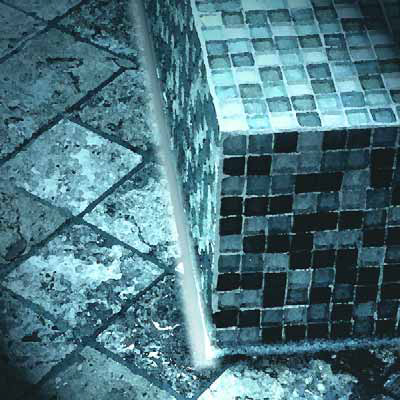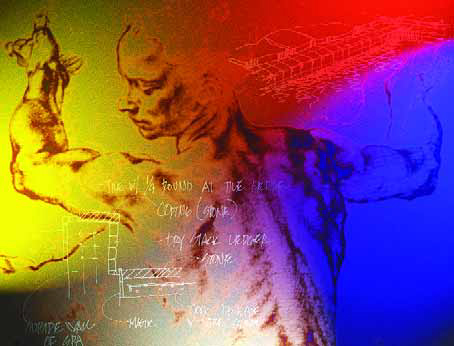transitions
When asked what an "optical physicist" does, I sometimes reply that I'm basically a professional choreographer. What I choreograph, of course, is not lithe dancers in leotards and toe shoes, but rather the countless invisible balls of energy whose source, directly or indirectly, is our sun. That's a colorful description, but it accurately reflects the fact that I've spent my entire professional career coaxing, urging, manipulating and orchestrating light in a completely conscious manner with tools both simple and complex. Armed with a liberal arts education and majors in art history and American studies, I founded an industrial-laser company in 1983 and spent the next 18 years learning how to choreograph balls of energy into extremely precise line dances. There was nobody out there to teach us
My last two "Details" should make it pretty clear that I'm more enthusiastic about tile than I am about any other surface material for watershapes. In October, we covered the use of color while focusing on tile, and in November there was a discussion of my favorite suppliers and their distinctions. This time, I'll bring the sequence to a conclusion by looking at the process of selecting tile and at the ways I blend tile mosaics. My enthusiasm extends from the fact that tile in watershapes is incredibly dynamic - so visually flexible, so durable and, if done well, so elegant. It can be used either as a
Sometimes, it's the simple things that trip you up. As a case in point, I was recently called by a homeowner who was wondering why the tile was falling off the outside wall of a raised pool that had just been installed by another builder. Unfortunately, that builder apparently hadn't known how to pull off this standard detail. The pool had been raised eight inches out of the ground in keeping with the design intent. This is a detail I use frequently to create a seating area around pools, but I was a bit mystified by this particular choice of elevation: It was too high to be a step (most building codes call for maximum 7-1/2-inch outdoor risers) and too low to serve very well as a bench. (Actually, it was just about right for
Finding ways to blend the angular rhythms of modern architecture with the sweeping splendors of nature constitutes one of the more difficult challenges faced by today's watershapers. In the case of the project pictured on these pages, we were contacted in 2002 about an enormous, modern-style home on Mercer Island overlooking the shore of Lake Washington, right near Seattle. The property was being remodeled, and the owners wanted a set of watershapes that would enhance the beauty of the two-acre estate while more convincingly integrating the geometry of the structure with its woodsy lakefront setting. The solution: a set of watershapes that start near the house with perfect geometric forms that stick to the architect's original design, then moves down the hillside through various transitional stages to a pond feature that looks like part of
This project is all about making connections - connections between the inside of a home and the outdoors; between surrounding wide-open spaces and an intimate backyard; between the colors of the hillsides and the materials used in crafting the watershape; between the clients' desire for recreation and their passion for beauty; and between the beauty of nature and the modern, sculptural lines of the design. If you've followed my "Details" column in WaterShapes in recent months, you've seen many of the components that have been incorporated into this particular

















